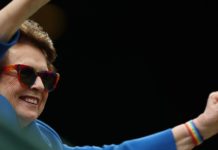The British government, facing a potential avalanche of layoffs in the fall, announced a host of tax and spending measures on Wednesday to preserve and create jobs in Britain as the nation reopens its economy.
Rishi Sunak, chancellor of the Exchequer, laid out to Parliament a 30 billion pound, or $37.7 billion, spending plan that included tax cuts, employment coaching and even a 50 percent discount for diners who go to restaurants and pubs. The measures are designed to support the economy as it transitions away from a robust program that subsidized workers’ wages during lockdown.
“Despite the extraordinary support we’ve already provided, we face profound economic challenges,” Mr. Sunak said. “Taken together in just two months, our economy contracted by 25 percent, the same amount it grew in the previous 18 years.” With more job losses forecast, he added: “I will never accept unemployment as an unavoidable outcome.”
But he said Britain’s furlough program, which has paid up to 80 percent of the wages of 9.4 million workers since March, would end in October, as previously announced. Keeping it longer, he said, would provide “false hope” to workers. Instead, employers will receive £1,000 for each employee they bring back to work through January.
Britain’s unemployment rate has been held down at 3.9 percent thanks to the popular furlough payments. The Organization for Economic Cooperation and Development warned on Tuesday that the rate could climb to 11.7 percent by the end of the year, and even higher if there was a second wave of coronavirus infections.
Mr. Sunak presented plans to support the hospitality and tourism industry, including a temporary 15 percentage-point cut to VAT, a type of sales tax, to 5 percent. He also announced an “Eat Out to Help Out” initiative, in which the government would pay for a 50 percent discount on some meals eaten in restaurants and pubs, up to £10 per person.
In addition, the Treasury is planning to spend £3 billion to make public buildings greener, and offer vouchers to be spent on home insulation as part of the government’s effort to reduce net carbon emissions to zero by 2050 through energy efficiency. Mr. Sunak also said there would be a temporary reduction in the stamp duty, a tax on home purchases.
Mr. Sunak, 40, has been thrust into the limelight from relative obscurity during this pandemic. He was made chancellor — Britain’s top financial officer — in February just weeks before the government shut down most of the economy. He gained popular support by quickly spending £130 billion to prop up businesses and pay wages through the furlough program, in a break from the Conservative Party’s historically austerity-focused approach to economic crises.
But some in his party have balked at the cost of the spending, as the size of Britain’s debt is now greater than the gross domestic product. Mr. Sunak said he had now switched the focus to returning people to their jobs, using policies that tinker in different corners of the economy before a more comprehensive review of the budget is expected later in the year.
Some analysts said the collection of measures contained few surprises. “The solutions proposed are familiar: construction, house prices and a short-term consumer boost,” Mark Gregory, the United Kingdom chief economist at EY, wrote in a note. “There is unlikely to be an increase in business investment until we have a clearer view of the government’s long-term vision and plans for the U.K. economy.”
But Kallum Pickering, a senior economist at Berenberg Bank, said the “fresh buffet” of initiatives would “pack a sizable punch and support higher private spending with significant implications for hard-hit sectors such as construction, housing and hospitality.”
Others were afraid the measures weren’t bold enough. Pointing to the £1,000 bonus paid to employers to bring workers back from furlough, Torsten Bell, chief executive of the Resolution Foundation, a research group focused on policies to improve living standards, said it amounted to “a bit of cash support” for firms that were probably going to bring back workers anyway.
“It’s not a great feat for the scale of the crisis,” he said. “My broad view is it’s quite risky to not have done more than he’s done.”
Unlike previous measures like the furlough program, where the government deposited money almost directly in people’s pockets, Wednesday’s announcements were focused on returning to work and encouraging private spending.
The chancellor showed particular concern for young people, who have been hit especially hard by pandemic-related job losses. More than half a million people under 25 are unemployed in Britain, according to official statistics.
“Under-25s are two and a half times as likely to work in a sector that has been closed,” Mr. Sunak said. “We cannot lose this generation.”
He announced a £2 billion fund to pay the wages for six months for 16- to 24-year-olds on state benefits who are offered new jobs. Another £160 million will be spent on training programs, career advice services and other work placements for young people, he said.
Source : Nytimes













